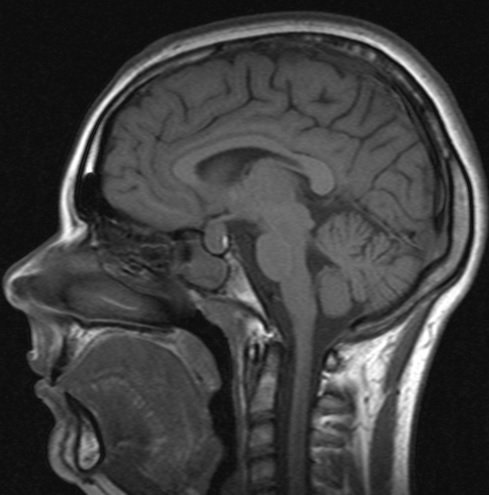Methods of diagnosis of the vessels of the head and neck
Contents:
- Indications for the study of the vessels of the head and neck
- Methods of the study of the cerebral vessels
- How can I simultaneously examine the vascular system of the head and neck?
- Invasive diagnostic methods
 The pace of life, stressful situations and malnutrition affects the health status. This is mainly manifested by frequent headaches, decreased mental performance and other disorders. The stronger the symptoms, the sharper the question becomes - how to check the vessels of the brain. Most research methods take a little time, do not require special preparation and are not accompanied by painful sensations.
The pace of life, stressful situations and malnutrition affects the health status. This is mainly manifested by frequent headaches, decreased mental performance and other disorders. The stronger the symptoms, the sharper the question becomes - how to check the vessels of the brain. Most research methods take a little time, do not require special preparation and are not accompanied by painful sensations.
Indications for studying the vessels of the head and neck
Although most people do not rush to the doctor for discomfort or the first signs of malaise, there are a number of symptoms that indicate a deficiency in the blood circulation of the brain. In such cases, the diagnosis of the vessels of the head and neck is of primary importance. These include:
- frequent migraine headaches or repetitive headaches;
- loss of consciousness, fainting or dizziness for no reason;
- uncertain gait and difficulty in maintaining balance;
- sudden vision and memory disorders;
- pain and a feeling of throbbing in the neck;
- problems with arterial and intracranial pressure.
Competent diagnosis allows early detection of the risk of stroke and brain tumors, the degree of arterial wall damage in atherosclerosis and hypertension, the severity of brain concussion, cerebral infarction or encephalopathy. Checking the blood vessels of the brain helps determine the tactics of treatment, adjust medication or offer the patient surgical treatment.
Methods for the study of cerebral vessels
Methods of studying the vessels of the brain are divided into non-invasive and invasive( with penetration into the cavity of the vessel).We will study how to check the vessels of the head:
- Neurosonography( NSG) is a method, intended for infants under one year, diagnosed with hypoxia of the brain and birth traumas to determine the state of blood vessels and the liquor system.
- Duplex scanning( DS) - modern ultrasound equipment provides a color image of the arteries and veins of the brain. It allows to diagnose the initial stage of stenosis, atherosclerotic damage, to detect aneurysms or occlusions of cerebral vessels.
- Rheoencephalography( REG) is performed with the use of electrodes and weak current, used to assess the rate of blood circulation of the brain, the patency of lumen, tone and elastic properties of the walls of blood vessels.
How can I simultaneously examine the vascular system of the head and neck?
The examination of the vessels of the head and neck is carried out by the following methods:
- Echoencephalography( EEG) - used to study the state of the vessels of the head and neck, the manipulation is painless and is conducted without preparation. Characterizes the internal structure of the brain, the possible magnitude of intracranial pressure and the circumcostal cavity. Applied with problems with blood circulation of the brain, with suspicion of oncological and suppurative processes, hematomas.
- Ultrasound dopplerography( UZDG) - determines the speed of blood flow along the arteries of the neck( carotid and vertebral) and the head( brain), evaluates their diameter, filling and stroke. Such diagnostics are important in atherosclerosis for measuring the severity of vascular lesions, the degree of their blockage.
Important! Before the procedure, taking vasodilators is prohibited.
There are other methods:
- Ultrasonography( USG) is used for simultaneous examination of the arteries of the head and neck for the detection of thrombi, atherosclerotic plaques and fibrous nodes.
- Computed tomography( CT) - receive layered X-ray photographs that help to determine the presence of the pathology of the cerebral vascular wall and possible congenital malformations of the cerebral arteries and veins.
- Magnetic resonance imaging( MRI) allows you to obtain a three-dimensional image and assess the state of blood vessels and various parts of the brain. The method is not used for patients with a mass above 150 kg, in the presence of pacemakers, artificial joints and metal implants.
Invasive diagnostic methods
- Computer angiography( CA) is an invasive diagnostic method. After local anesthesia, the catheter is injected with a radiopaque substance into the lumen of the artery and a series of images are taken with the help of an angiograph. The method is used in preparation for neurosurgical operations, suspicion of oncological processes, cysts, thrombosis and aneurysms. Contraindications are severe renal and hepatic insufficiency, intolerance to iodine preparations, problems with blood clotting, pregnancy and lactation of the baby, mental illness.
- Magnetic resonance angiography( MRA) is performed with or without the use of contrast. Detects stenosis and thrombosis of the arteries or veins of the head and neck, causes of increased intracranial pressure and the extent of lesions in stroke, heart defects and tumors.
 Patients are interested in the question: "Which doctor checks the vessels of the brain? ».It is recommended to consult a neurologist who, after interviewing and examining the patient, will prescribe a type of vascular study and send it for diagnosis. Depending on the complexity of the situation and the concomitant pathology, non-invasive procedures are performed on an outpatient basis, and invasive procedures are performed exclusively in a hospital setting.
Patients are interested in the question: "Which doctor checks the vessels of the brain? ».It is recommended to consult a neurologist who, after interviewing and examining the patient, will prescribe a type of vascular study and send it for diagnosis. Depending on the complexity of the situation and the concomitant pathology, non-invasive procedures are performed on an outpatient basis, and invasive procedures are performed exclusively in a hospital setting.
Thus, the range of diagnostic manipulations is wide enough and each has its advantages. But it should be remembered that earlier consultation and timely diagnosis will help prevent most unpleasant consequences.
write the question in the form below:



